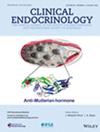Clinical Utility of Dual-Time 68Ga-Pentixafor PET/CT in Diagnosing and Subtyping Primary Aldosteronism
Abstract
Objectives
This study aimed to compare the clinical efficacy of dual-time 68Ga-pentixafor PET/CT with adrenal vein sampling (AVS) in PA lateralization.
Methods and Methods
We retrospectively analysed 161 patients with PA. We assessed the diagnostic performance of dual-time 68Ga-pentixafor PET/CT in diagnosing unilateral primary aldosteronism (UPA) and aldosterone-producing adenoma (APA). We also explored the relationship between 68Ga-pentixafor PET/CT findings, postoperative outcomes, and the presence of the KCNJ5 gene mutation.
Results
The diagnostic accuracy of 68Ga-pentixafor PET at 10 and 40 min for UPA (75.2% and 76.4%, respectively) surpassed that of CT (55.3%, p < 0.01). The optimal cutoff for diagnosing APA was 10 min lesion-to-normal adrenal ratio = 1.95, yielding an AUC of 91.9%, with sensitivity, specificity, and accuracy of 76.0%, 91.3%, and 83.3%, respectively. This high diagnostic efficacy extended to subgroups with nodules ≥ 1 or < 1 cm, and the largest AUC of 68Ga-pentixafor PET/CT for diagnosis APA with lesions ≥ 1 and < 1 cm is 88.2% and 97.0%, respectively. The lateralization results provided by 68Ga-pentixafor PET/CT corroborated the surgical treatment decision in 92.0% of PA patients, and more than 95% achieved clinical and/or biochemical cure or improvement. The PET positive rate of KCNJ5 mutation was higher than that of KCNJ5 wild-type, with optimal diagnostic efficacy at 40 min lesion-to-liver ratio = 4.79 (AUC 81.3%, sensitivity 90.0%, specificity 66.7%).
Conclusion
Dual-time 68Ga-pentixafor PET/CT exhibits robust diagnostic efficacy in PA lateralization. Furthermore, 68Ga-pentixafor PET/CT holds promise as an imaging marker for predicting the presence of the KCNJ5 mutation in PA patients.

 求助内容:
求助内容: 应助结果提醒方式:
应助结果提醒方式:


